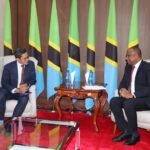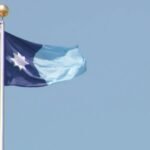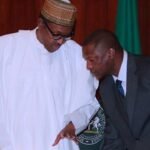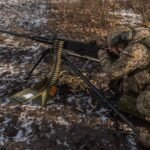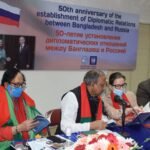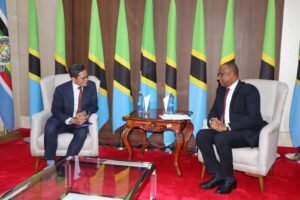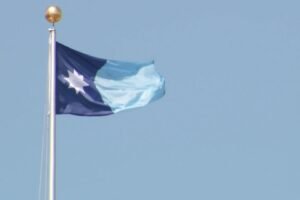The United Nations General Assembly in 2017 proclaimed September 23 as the International Day of Sign Languages to highlight the human rights of people who are deaf and hard of hearing.
Sign languages have been defined from a linguistic viewpoint as languages, and those using sign languages have been designated as a linguistic minority, according to the World Federation of the Deaf (WFO). But having their linguistic rights met, or even recognized, remains a challenge for many people who are deaf and hard of hearing worldwide, including on the African continent.
The myriad of sign languages across Africa adds to the difficulties. Ambrose Murangira, who communicates in a sign language unique to Uganda, explained why each country has its own one.
It’s all about “cultural practices, and different cultures have different ways of living,” he told DW through a sign language interpreter.
Ugandan sign language is recognized as one of the East African nation’s official languages.
“So it has been accepted in schools, even in high courts, even in the Parliament of Uganda,” Murangira explained.
Murangira works as a disability inclusion advisor at Light for the World, an association of NGOs that help people with eye diseases, blindness and other challenges in developing countries.
Inadequate communication
Access to education and information in sign languages is often inadequate despite many achievements in this area, Murangira said.
“We also struggle with the healthcare services, also to get employment. If you want to start a family, it is also a challenge,” he added.
There are more than 70 million deaf people worldwide, more than 80% of whom live in developing countries, according to the World Federation of the Deaf. Collectively, they use more than 300 different sign languages.
Another issue encountered by many people who struggle to communicate is the attitude of others. For example, many sign language users are often ignored, particularly in the health sector, Murangira said.
“Uganda has good policies for inclusion, but they are not being implemented, he added. “The governments, in general, have big money. They spend on security, paying for helicopters and guns. We have good laws for inclusion, but lack of implementation.”
Some countries do better in this regard, he said, such as Uganda’s neighbors Rwanda and Kenya.
South Africa in July recognized sign language as its 12th official language, becoming the fourth country in Africa to do so after Kenya, Uganda and Zimbabwe.
There are at least 41 countries that now recognize sign language as an official language.
In need of better education
South Africa — considered one of the most developed countries on the continent — has a long-established education system for people who are deaf and hard of hearing.
Despite more than 40 schools for deaf students in South Africa, there is still plenty of room for improvement, according to Claudine Storbeck, director of Wits University’s Centre for Deaf Studies in Johannesburg.
Storbeck told DW that it took 25 years for sign language to be made an official language in South Africa. However, children still leave school illiterate because educators can not communicate with them.
Further north in South Sudan, before the emergence of the South Sudanese Sign Language (SSSL), people living in the North African nation used a mix of local signs alongside Kenyan, Ugandan and Arabic sign languages.
“Making an impact is difficult because the country has been at war for almost 25 years,” said Sophia Mohammed, country director of Light for the World in Juba, the South Sudanese capital.
Milestone for deaf and hard of hearing
It’s estimated that less than 1% of deaf people in South Sudan have access to health services because of communication barriers, Mohammed told DW.
“Mothers and children with disabilities are the most marginalized and hidden in the society due to stigma and discrimination.”
That said, South Sudan made significant progress in 2021 when it launched a sign language dictionary in what was hailed a “milestone for deaf and hard-of-hearing people.”
“South Sudan has more than 34 tribes, and we had to make sure that the sign language dictionary is accepted by all tribes,” said Mohammed.
In Nigeria, deaf Hausa people use maganar hannu, a sign language that has been “well researched and documented and used in the northern states of Nigeria,” according to Constanze Halima Schmaling, a linguist for sign languages at Munich’s Ludwig Maximilians University.
Language mixtures in Nigeria
“Nigeria is a huge country with 500 spoken languages,” Schmaling told DW. “It is not clear whether there is one Nigerian sign language or several different ones. There is too little research in this area.”
Schmaling pointed out that universities throughout Nigeria tend to teach American Sign Language (ASL).
“This creates language mixtures and the differences in Hausa sign language between old and young people or between those who have been to school or only attended literacy classes for adult deaf people,” said Schmaling.
For such a culturally and linguistically diverse country, developing one common sign language would be a considerable undertaking and, unfortunately, not one of its top priorities.
Source : DW


